When the first-generation GT broke cover in late 2014 – ahead of its public debut at that year’s Paris Motor Show – it appeared Mercedes-AMG was experiencing some confusion.
Here was a two-door, rear-wheel-drive coupe powered by a 375kW/650Nm 4.0-litre twin-turbo V8 in ‘S’ guise. A great recipe, without question, but less than 12 months later the C63 Coupe would be revealed featuring two more seats, an extra 50Nm and a substantially lower price tag.
AMG, of course, knew exactly what it was doing and any confusion as to the two cars’ respective roles would last only as long as a back-to-back drive. If you think of the C63 Coupe as a state-level sportsperson – very fit, very talented, extremely capable – then the AMG GT was a national-level competitor: sharper, fitter, more skilled. Worthy of representing Mercedes at the sports car Olympics.

Outrageous outputs would come later with variants like the GT C and GT R, but even with the same power as its C63 sibling, the GT was much more athletic – the distilled essence of AMG – as the second car after the gullwinged SLS to be engineered top to bottom by Mercedes’ performance arm.
For the second-generation GT, AMG has expanded its repertoire. Visually it’s clearly an evolution of the original, but it now has a much broader spread of talents. There are more models – a four-cylinder and a hybrid bookending the traditional twin-turbo V8s, all-wheel drive for greater performance in a wider array of conditions, 2+2 seating and more luggage space, a greater use of technology and more luxury. In short, the intention is for it to be more Mercedes without being any less AMG.
Marrying these seemingly contradictory objectives has required a lot of effort, with every facet of the car being put under the microscope. So, to examine the results, let’s apply a microscope of our own.
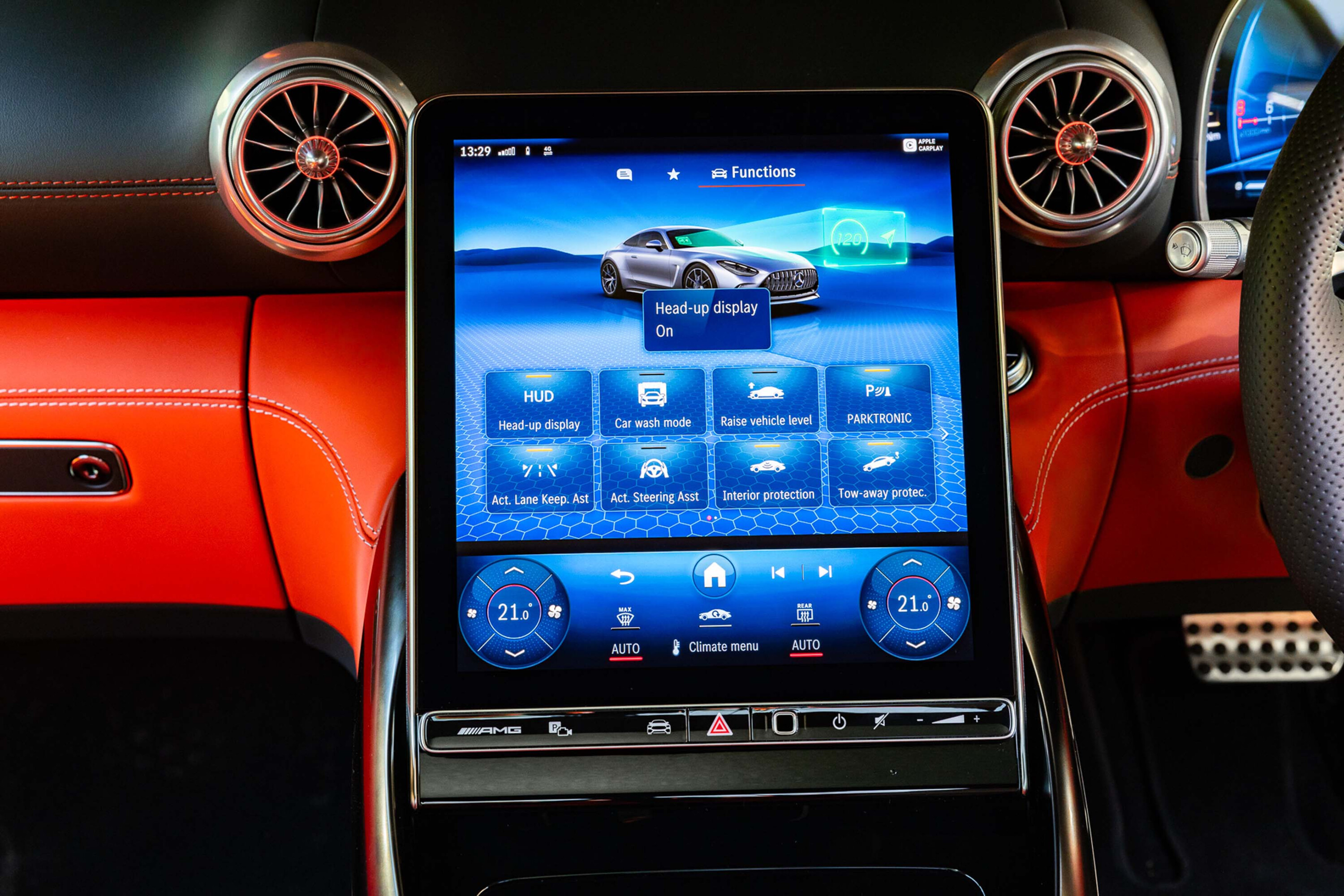
More is More
If there’s one word that sums up the new Mercedes-AMG GT, it’s ‘active’. Not just because it’s designed to be driven in an enthusiastic manner, devouring roads with a twin-turbo V8 snarl, but due to the constant adjustments that various systems are making – aerodynamics, suspension, cooling, all-wheel drive and more – to optimise that driving experience.
But let’s start at the very core, with a multi-material bodyshell incorporating steel, aluminium, magnesium and fibre composite in a bid to best balance weight and strength. It’s a larger car than its predecessor, primarily to adopt the 2+2 layout, growing in length by 177mm, width by 46mm, height by 66mm and wheelbase by 70mm.
Whereas the previous GT came only with a 4.0-litre twin-turbo V8, which ranged from a formidable 340kW/600Nm in the original entry-level Coupe to a frightening 537kW/800Nm in the flat-plane-crank Black Series, the new GT 43 kicks off the range with four cylinders.
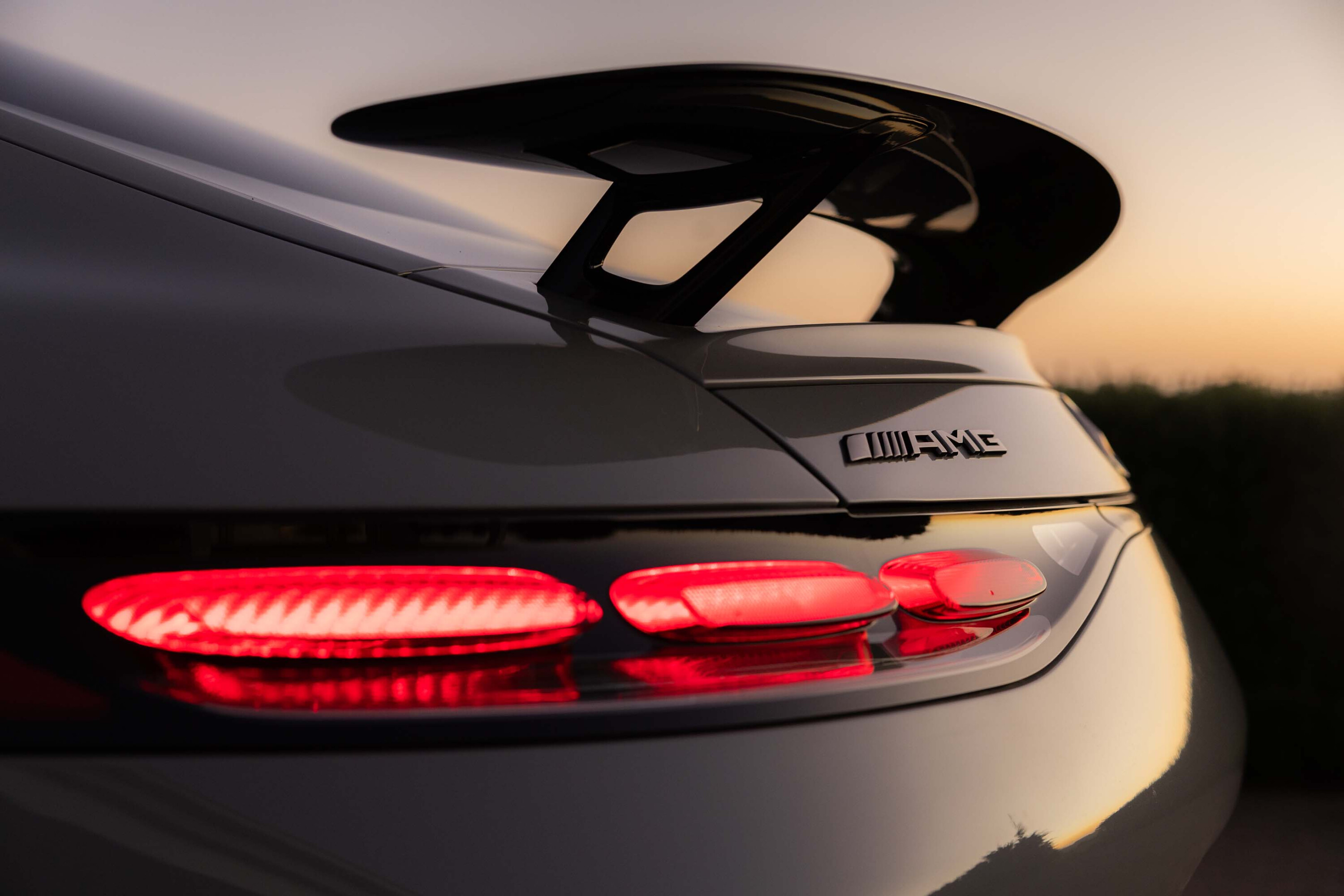
That could be underwhelming were the four-cylinder in question not the 310kW/500Nm M139 from the A45 with an electrically assisted turbocharger. While it’s the only variant with rear-wheel drive, 0-100km/h is still dealt with in 4.6sec along with a 280km/h top speed.
The GT 55 introduces the familiar 4.0-litre M177 hot-vee V8, which has benefited from a new sump, repositioned intercooler, active crankcase ventilation and optimised inlet and exhaust ports. It produces 350kW/700Nm, good enough for 0-100km/h in 3.9sec when teamed with all-wheel drive and the nine-speed MCT wet-clutch automatic, while an increase in boost pressure lifts outputs to 430kW/800Nm in the GT 63 and cuts the 0-100km/h time to just 3.2sec.
Combined with a 315km/h top speed, the GT 63 would give even the previous Black Series a run for its money in a straight line, but here it merely sits in the middle of the range. The more focused GT 63 Pro offers 450kW/850Nm, which while no quicker to 100km/h, cuts 0.5sec from the 0-200km/h time (10.9sec).
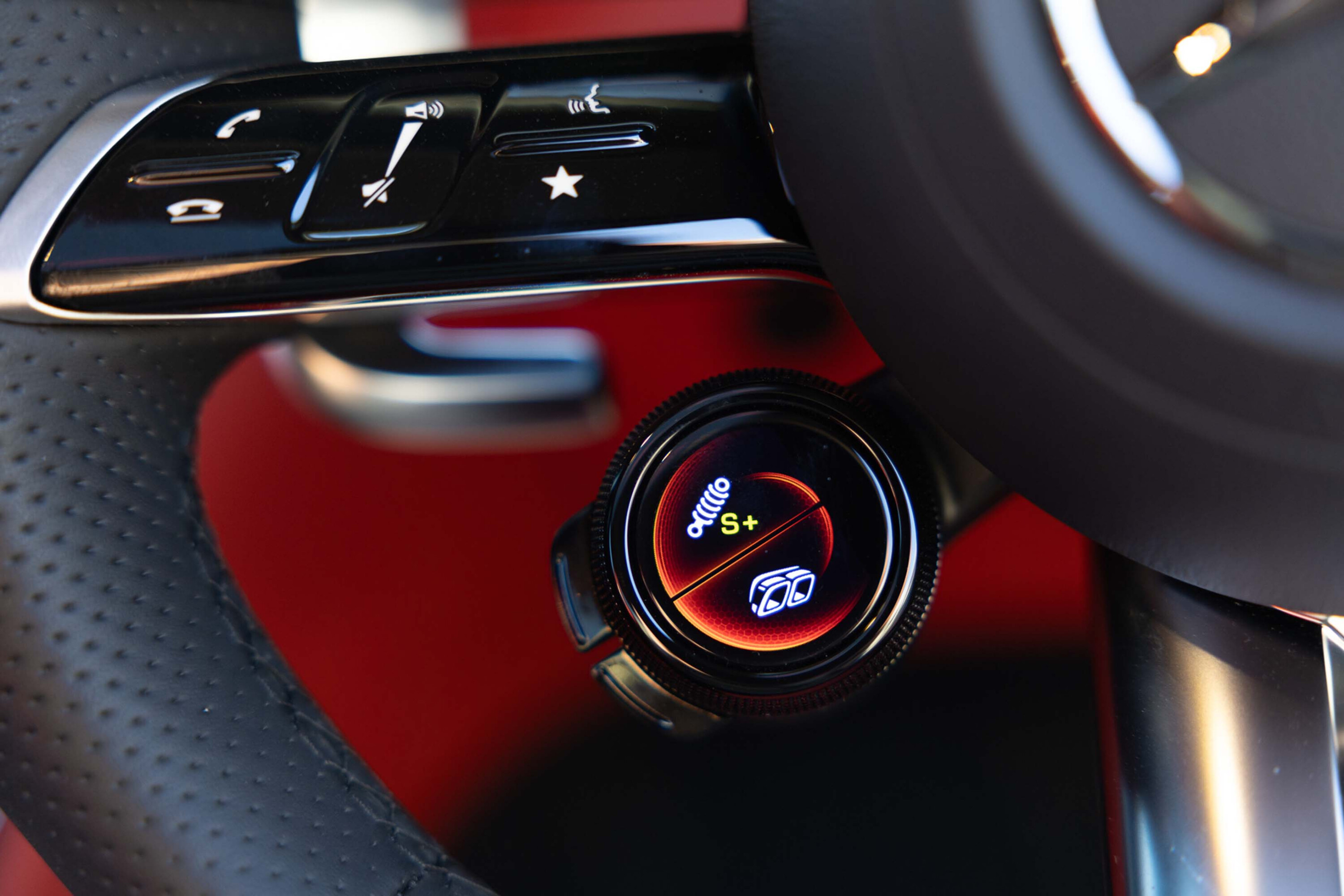
However, add hybrid assistance to this already potent recipe and you have a true rocket. The GT 63 E Performance incorporates a 150kW/320Nm electric motor with its own two-speed transmission for total outputs of 600kW/1420Nm, numbers that require a second take.
The result is truly staggering acceleration, with 0-100km/h taking just 2.8sec, yet the 6.1kWh battery – its 560 cells individually cooled by a fluid with two to three times the heat capacity of water – provides up to 13km of electric-only range.
In order to harness this power, all-wheel drive appears on all GT variants bar the GT 43. The rear wheels are constantly driven, an electronically controlled rear diff able to apportion power left or right to the wheel with the most grip, while an electromechanically controlled clutch brings the front wheels into play as required.

This means the GT retains traditional rear-wheel drive characteristics, but with extra traction in slippery conditions. The track-focused Pro adds coolers for the front and rear diffs and transfer case, as well as two extra engine radiators for sustained hot-lapping.
One of the most difficult problems created by the GT’s expanded bandwidth concerns the suspension, ensuring it remains the torchbearer for AMG dynamics but with the comfort expected of a luxury grand tourer. The key is in that word active once more. There is five-link suspension front and rear with all links, steering knuckles and wheel carriers made from forged aluminium, but it’s AMG Active Ride where the real trickery lies.
In addition to multi-stage electronically controlled damping, active hydraulic elements at every corner eliminate the need for conventional anti-roll bars and allow each wheel to be operated individually.
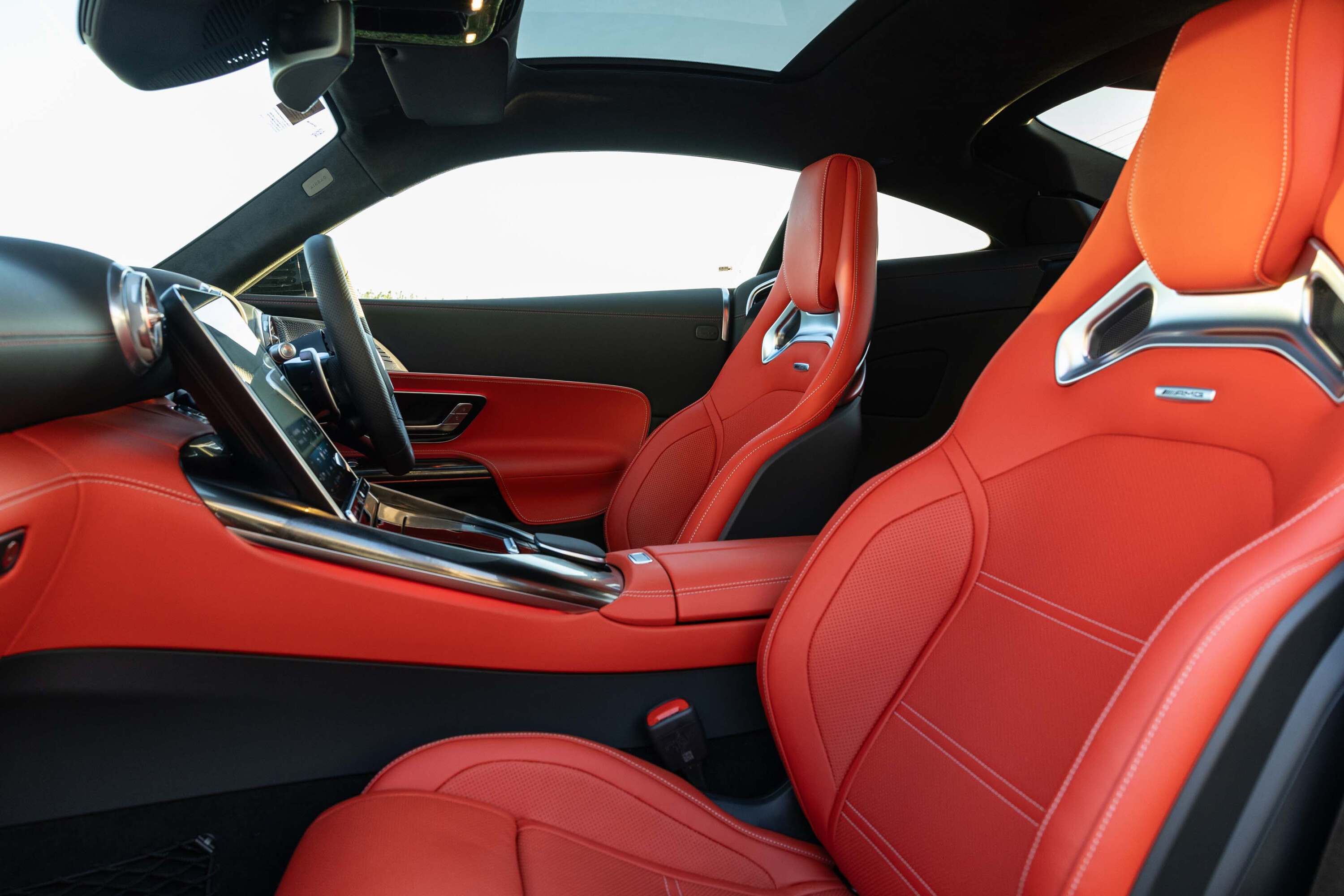
In a straight line this means wheels can deal with bumps or potholes independently without feeding the disturbance across to the other side, while the active roll stabilisation keeps the maximum amount of tyre in contact with the road during heavy cornering.
And what tyres. V8 variants now wear 21 x 10.5-inch front and 21 x 11.0-inch rear wheels with 295/35 (+30mm) and 305/35 (+10mm) tyres respectively, while the Pro uses 21-inch wheels of the same width, with extreme Michelin Cup 2Rs a no-cost option, replacing the standard Pilot Sport 5s.
The brakes are commensurately huge, with 390mm discs and six-piston calipers up front and 360mm discs with single-piston floating calipers at the back. The carbon-ceramics, fitted as standard to the Pro and optional on the GT63 and E Performance, are larger again (420mm discs front, 380mm rear). Rear-wheel steering also appears for the first time, increasing agility at low speed and stability at higher velocities.
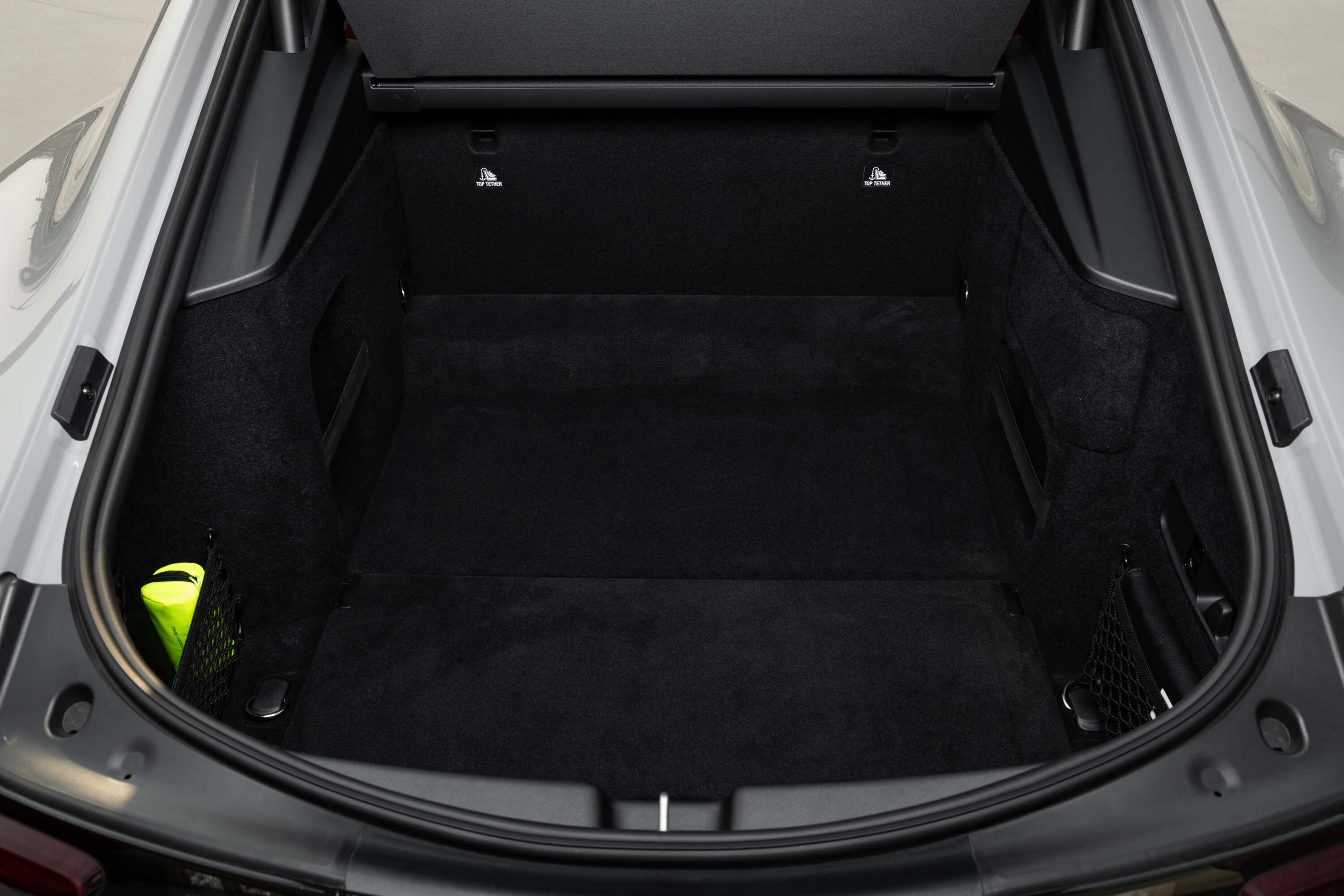
One area where the new GT has taken a decisive step forward is its aerodynamics, especially the – yep, again – active kind. In typical use, vertical slats behind the lower air intake and horizontal louvres behind the upper air intake are closed to reduce drag and direct air to the underbody to reduce lift, but as certain mechanical components reach a temperature threshold these fins open to allow air to reach the heat exchangers, though the upper louvres only open above 180km/h.
Furthermore, a carbon element extends at the front above 80km/h to create a Venturi effect to help suck the nose to the road, while at the rear an active rear spoiler can deploy in five different positions to prioritise efficiency or downforce as required. An optional aero kit, fitted as standard on the Pro, includes front and rear ‘flics’, a larger rear diffuser and fixed rear wing.
The design team has managed to move the front occupants forward 200mm to liberate room for those rear seats yet somehow the new GT is clearly related to the first. It’s squat and aggressive in its proportions – the huge grille, flared guards and twin power domes on the bonnet leaving no doubt as to its potency.
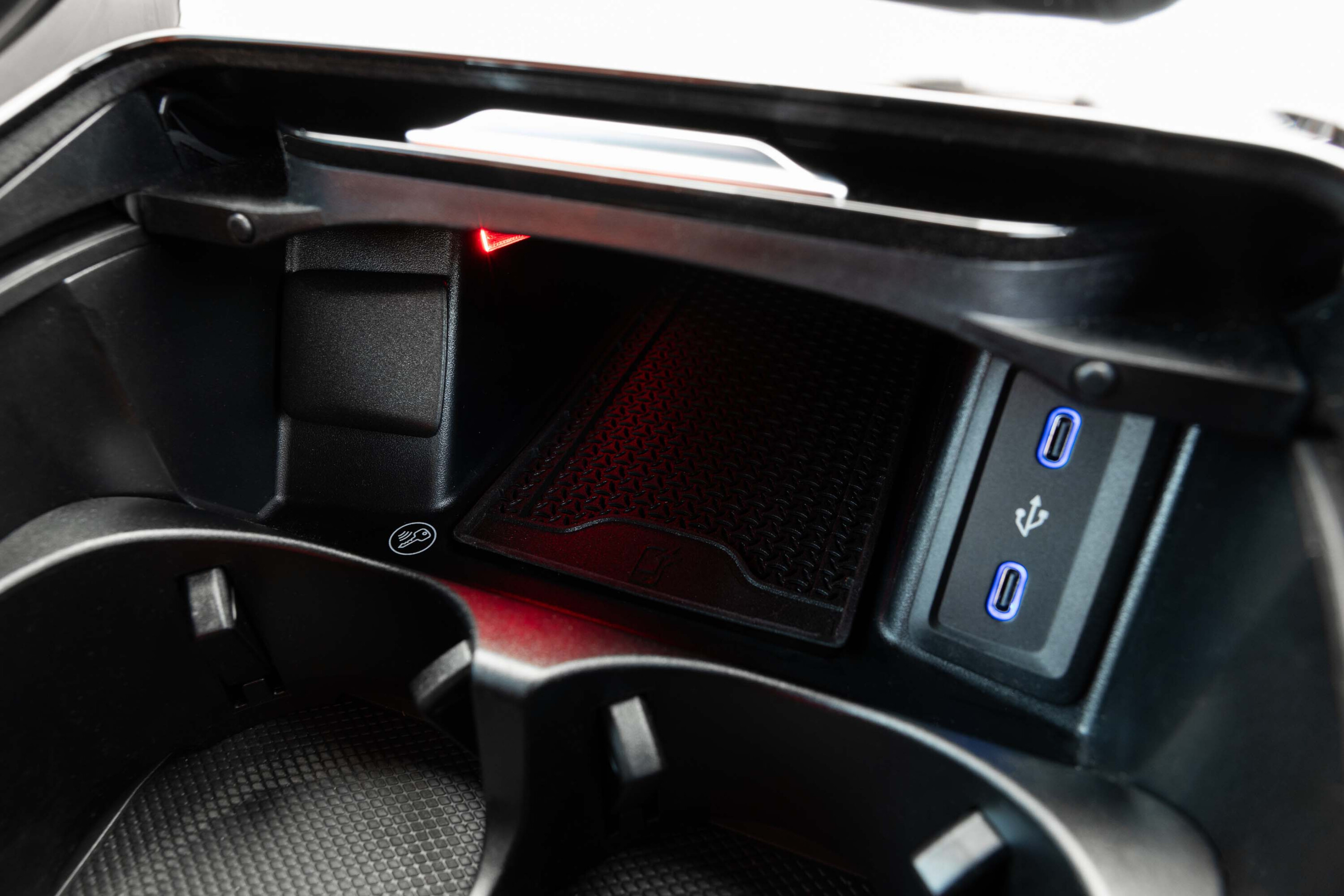
Inner growth
It’s on the inside, though, where the real revelation exists. For all its undoubted performance, the GT 63 has also learned how to cosset, with heated and ventilated front seats with massage, cutting-edge active safety systems, an 11.9-inch touchscreen infotainment system with the latest MBUX software, optional diamond-quilted Nappa leather and a hands-free power tailgate.
You’ll be using that tailgate, too, as relocating the gearbox from the rear of the car to behind the engine has increased luggage space from 175L to 321L, which expands further to 675L with the split-fold rear seatbacks stowed.

AMG admits the tight rear seats are only suitable for children up to 150cm tall – hence the 2+2 designation – but even if unoccupied they are a useful further luggage compartment. The light-packing first-generation GT owner can now take everything but the kitchen sink.
At evo we love a focused performance car and the first-generation GT was a raw and visceral experience, but the feedback from customers was they wanted something a bit more useable. We can put the microscope down and say that by combining searing performance with greater technology, luxury and practicality, Mercedes-AMG is in with a good shout of making its customers active in heading down to their nearest dealer for a new GT.






